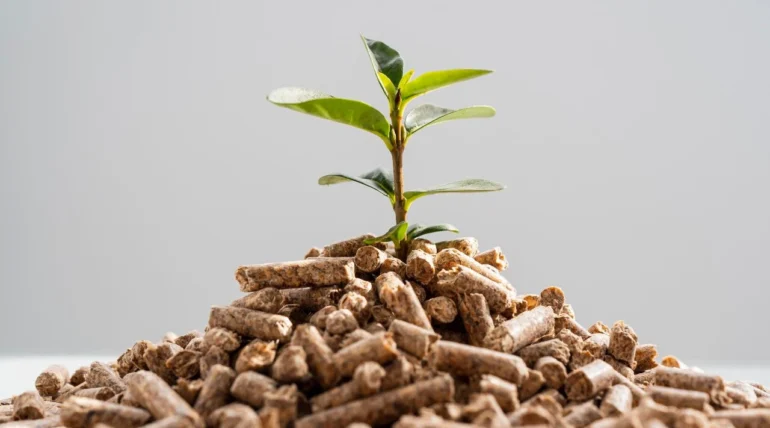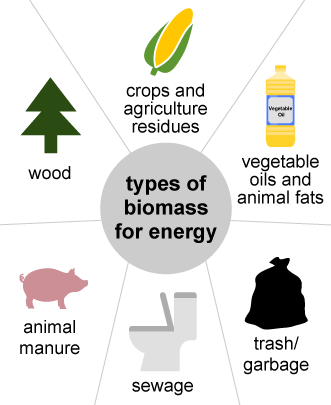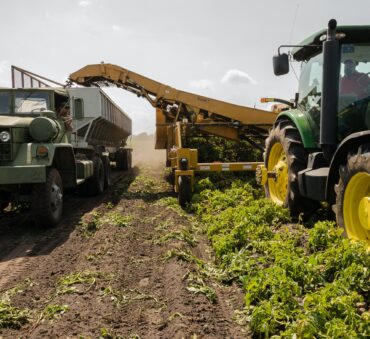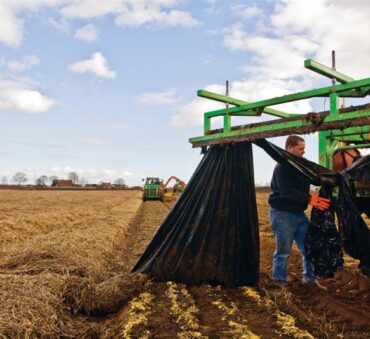Food loss and waste account for 8-10% of annual global greenhouse gas emissions, drawing attention to the causes and effects of food waste as a key factor in environmental change.
The upside?
Biomass provides a practical solution by converting food waste into a renewable energy source.
And surprising to many people, this is far from a new solution. Until the mid-1800s, biomass was the largest source of total annual U.S. energy consumption, but by 2023 it accounted for only about 5% of the nation’s total primary energy use.
And while its use has declined, biomass still holds valuable potential as a modern renewable energy solution, especially in tackling food waste.
Keep reading to learn how does biomass energy work, common feedstocks fueling this solution, and more.
Key Takeaways
- Biomass is a renewable organic material, such as plants, food scraps, and wood, that can be converted into a sustainable energy source.
- Biomass energy reduces greenhouse gas emissions, diverts waste from landfills, provides a reliable local power source, supports ESG goals, and strengthens a company’s sustainability story.
- Combustion, the most common way to turn biomass into energy, burns organic materials like wood and agricultural residues to create heat and power.
- Anaerobic digestion breaks down organic waste without oxygen, producing biogas for energy and digestate that can be used as fertilizer.
- Gasification and pyrolysis are both thermochemical conversion processes, which refers to processes that use heat to transform biomass into energy and chemical products at high temperatures.
What Is Biomass Energy and Why Does It Matter
Biomass is a renewable organic material, such as plants, food scraps, and wood, that can be converted into a sustainable energy source. The conversion of food waste to bioenergy has an array of benefits for the environment, including the reduction of landfill waste.
With food waste being the largest contributor to methane emissions from landfills, biomass energy production provides a sustainable solution that turns a major environmental challenge into a valuable resource.
This approach also supports a circular economy by keeping products and materials in use for as long as possible through processes such as maintenance, reuse, refurbishment, remanufacturing, recycling, and composting.
Beyond environmental benefits, knowing how biomass works and implementing it can be very beneficial for companies. Why?
Because it serves as a cost-effective alternative to traditional waste disposal methods. For instance, let’s say a brewery uses its spent grains as biomass; those grains can be converted into energy, turning waste into a cost-saving resource.
How Biomass Energy Works: Core Conversion Methods
So how does biomass energy work?
In addition to knowing the definition of biomass energy, we should understand how biomass energy is made to see how it contributes to the larger food recycling process and waste reduction efforts.
The main conversion methods include:
1. Combustion
Combustion is the process of burning organic materials, such as wood and agricultural residues, to create heat and energy. But how does biomass generate electricity through combustion?
Biomass is burned in a boiler to produce high-pressure steam, which then flows over a series of turbine blades, causing them to rotate. This rotation drives a generator, producing electricity as a result.
According to the UN Environment Programme, “Combustion is the most common way of converting solid biomass fuels to energy. Worldwide, it already provides over 90% of the energy generated from biomass, a significant part of which in the form of traditional uses for cooking and heating.”
That said, combustion does have several disadvantages, including high costs to control pollution from emissions, the need for more energy when treating waste with high moisture content, and more.
2. Anaerobic Digestion
Anaerobic digestion is a process through which bacteria break down organic matter—such as animal manure, wastewater biosolids, and food waste—in the absence of oxygen. This process takes place in a sealed anaerobic digester system called a reactor, which contains complex microbial communities that break down the waste.
The result is biogas, a renewable energy source that can be used for power generation, transport, heating, cooling, and cooking, and digestate, a nutrient-rich material that can be used as fertilizer.
The Food and Agriculture Organization of the United Nations also explains that “if biogas is cleansed from impurities, it becomes biomethane, which can be used as a high-efficiency fuel source, replacing natural gas. Biogas and biomethane are clean and valid alternatives to LPG and other fossil fuels.”
Overall, the production of biomass energy through anaerobic digestion is a great solution for beverage and food waste streams, as their high organic content, moisture content, fat, and salt can be used to produce high-value by-products.
3. Gasification & Pyrolysis
Gasification and pyrolysis are both thermochemical conversion processes, which refers to processes that use heat to transform biomass into energy and chemical products at high temperatures.
Gasification uses high heat with a limited amount of oxygen to produce syngas, while pyrolysis uses high heat without oxygen to break biomass down into bio-oil, syngas, and biochar.
Thanks to these energy-dense outputs, gasification and pyrolysis are gaining increasing attention—not only for their potential role in RNG production, but also because they’re well-suited for harder-to-process waste materials.
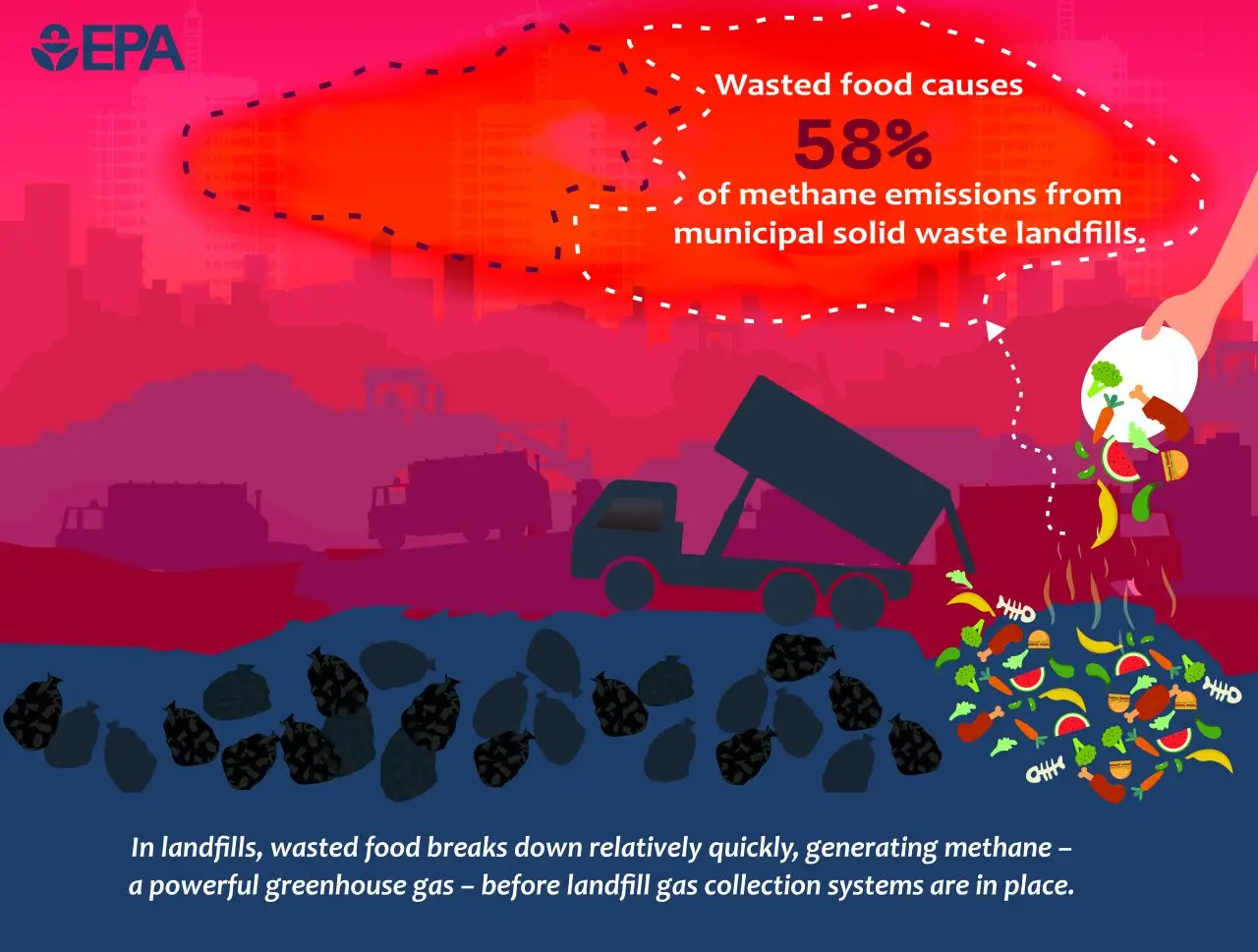
What Feedstock Fuels Biomass Energy
In regard to biomass and waste, the type of feedstock used plays a key role in the output.
That’s why we’re taking a closer look at 3 key feedstock sources: food and beverage waste, agricultural waste, and yard waste.
1. Food & Beverage Waste
Food and beverage waste are well-suited to be used as biomass because many of these materials have high moisture and energy density. While many different materials can serve as feedstocks, let’s take a look at a few key examples.
- Dedicated energy crops, such as switchgrass and hybrid poplar, are specifically cultivated for the purpose of converting their biomass into bioenergy. And while these crops are valuable, they compete with food production, meaning they must be used carefully.
- Unused agricultural production also represents a potentially large resource for biomass, with average food loss at the farm level estimated at 15-35% depending on the crop.
- Wastewater produced at food processing plants can also be harnessed as a biomass feedstock. In fact, a recent study suggests that a typical large processing plant can turn its starch-rich wastewater into hydrogen gas worth around $5 million a year.
- Brewers’ spent grain also serves as an effective feedstock for renewable energy, as it reduces reliance on wood chips, cuts fuel costs, and supports a circular economy transition.
2. Agricultural & Forestry Residues
Agro waste biomass is viewed as a major alternative energy source that expressively lowers greenhouse gas (GHG) emissions. Common materials include rice straw, wheat straw, rice husk, and corn stover, among others.
These agricultural by-products are not only valuable for bioenergy and biogas but also serve as important biodiesel feedstock sources, making them versatile contributors to renewable energy production.
As explained by ScienceDirect, “Agricultural residues refer to the leftover materials from agricultural processes, primarily consisting of components like cellulose, hemicellulose, lignin, lipids, proteins, and starch, which can be utilized as adsorbents due to their significant dry matter content.”
3. Yard & Municipal Organics
Yard and municipal organic waste include lawn clippings, leaves, and other green waste collected by municipal programs.
By turning yard and municipal organics into biomass, communities can reduce landfill dependence while creating a cleaner, more sustainable energy source. Local collection initiatives help make this possible, expanding the feedstock supply for biomass while supporting cities in meeting their waste diversion and sustainability goals.
Benefits of Biomass Energy
Biomass isn’t just about generating energy; it also addresses multiple business and environmental challenges at the same time, making it a versatile and impactful solution.
1. Emissions Reduction
Wasting food in the U.S. causes greenhouse gas emissions equivalent to those of more than 50 million gas-powered passenger vehicles.
By converting food waste into a biomass energy source instead, companies can divert waste from landfills, cut methane emissions, and produce renewable energy that advances their sustainability goals.
2. Waste Diversion & Landfill Reduction
Landfill diversion has an array of benefits, including lower contamination, reduced environmental degradation by minimizing the need for additional landfill space, and, as mentioned, lower methane emissions.
In addition, companies that divert food from landfills can save on landfill tipping fees and comply with stricter disposal regulations, making it a mutually beneficial solution.
3. Energy Reliability & Local Supply
Biomass is a stable and reliable local energy source. In some cases, businesses can even use this energy on-site to offset electricity or heating costs, reducing reliance on external utilities.
A recent article states, “The advantages of biomass over other renewable energy sources include its consistent energy supply, ability to use organic waste, and ease of integration into current infrastructure for a smooth transition to renewable energy.”
4. ESG & Brand Impact
Companies that understand how does biomass energy work and its importance are better positioned to achieve their sustainability goals. This is because biomass supports ESG targets, such as waste diverted, GHG emissions reduced, and renewable energy produced.
This also supports a company’s marketing efforts, as brands can showcase how turning byproducts into energy strengthens their sustainability story.
Comparing Biomass to Other Renewable Energy Sources
Companies should also be aware of how biomass energy compares to other renewable energy sources, as discussed below.
Biomass vs. Solar
How does biomass compare to solar panels?
While biomass offers clear advantages, it also comes with important challenges to consider. To start, biomass production releases carbon dioxide and other pollutants into the atmosphere, contributing to air pollution and climate change. In addition, unsustainable sourcing of biomass can lead to land degradation, requiring an experienced waste management partner to mitigate these risks.
However, one clear advantage of biomass over solar panels is that it reduces waste and helps improve waste management.
Solar panels, on the other hand, capture sunlight and convert it into electricity. This approach produces no greenhouse gas emissions or air pollutants. However, panels are often made with hazardous materials, which means improper handling can create environmental risks.
It’s important to note that these approaches don’t have to compete. Integrating solar energy into biomass conversion aims to make the process fully renewable, eliminating the need for fossil fuel-based electricity.
Biomass vs. Wind
Instead of using electricity to make wind, wind turbines use wind to make electricity by turning the propeller-like blades of a turbine around a rotor, which spins a generator and creates electricity. In addition to being an abundant and inexhaustible resource, it also provides electricity without burning any fuel or polluting the air.
However, installation challenges must be addressed to deliver electricity from wind farms to urban areas, and more research is still needed to reduce wind–wildlife interactions.
Similar to solar panels, this approach does not address the food waste crisis, which is a major disadvantage compared to biomass.
Challenges in Harnessing Biomass Energy
In addition to knowing how biomass energy works, you should be aware of potential obstacles you may face along the way.
- Feedstock Supply: For companies that generate large amounts of food waste, one challenge is ensuring a steady feedstock supply. Inefficient resource management can leave valuable waste underutilized or lost in the process. Because we maintain partnerships across the United States, Shapiro is able to secure a stable feedstock stream from multiple sources, so we’ll make sure your food waste is put to use and projects like Linden Renewable Energy keep running without interruption.
- Operational Challenges: Biomass systems require advanced infrastructure, specialized equipment, and ongoing maintenance. Technical downtime or inefficiencies in conversion technologies can significantly reduce energy yields.
- Economic Factors: The upfront investment for biomass energy facilities can be high, and operating expenses may fluctuate depending on market prices for waste collection, treatment, and competing energy sources. Businesses must also account for the variability in financial incentives and subsidies. However, when you work with a waste management partner, you can better control these costs through optimized logistics, reliable sourcing, and efficient recycling strategies, reducing inefficiencies that drive expenses up.
- Transportation and Logistics: Food waste is often heavy and bulky, making it costly and complex to transport to processing facilities. Businesses also need to stay compliant with evolving regulations that affect both transportation and storage. At Shapiro, we monitor these changes closely so you don’t have to, helping you stay compliant while keeping operations efficient. Our services include the collection, transportation, treatment, and recycling of all organic materials, meaning you can improve sustainability efforts without the stress.
- Regulatory Compliance: Beyond transportation, organizations must comply with a broad range of environmental standards, permits, and safety regulations that can vary by state or municipality. Non-compliance can lead to penalties and interruptions in operations.
- Sustainability Trade-offs: While biomass is renewable, improper management may raise concerns such as overuse of land, unintended emissions, or inefficient resource allocation. Balancing energy production with environmental stewardship is critical.
Conclusion
This article answers the ever-important question: How does biomass energy work?
And the answer lies in turning food waste into a valuable renewable energy source that supports sustainability while reducing costs and environmental impact.
With our services, your food waste can be collected, transported, and recycled into renewable energy—helping you cut costs, stay compliant, and strengthen your sustainability initiatives.
Contact us today to learn more about our tailored waste management solutions.
FAQs about the Biomass Energy Process
Biomass is considered renewable when sourced sustainably, but it isn’t 100% renewable since factors like land use, feedstock availability, and emissions can limit its long-term sustainability.
Biomass energy is renewable power made by turning organic waste like plants and food scraps into heat, electricity, or fuel through processes such as combustion, anaerobic digestion, gasification, and pyrolysis.
Biomass is like nature’s leftover food and plants that we can use to make energy. Instead of throwing away things like apple cores, grass, or wood chips, we can turn them into power to heat our homes or run machines.
Combustion is the most common method for converting biomass into useful energy. In this process, biomass is burned in a boiler to create high-pressure steam, which flows over turbine blades, causing them to rotate. That rotation drives a generator, producing electricity.
Baily Ramsey, an accomplished marketing specialist, brings a unique blend of anthropological insight and marketing finesse to the digital landscape. Specializing in educational content creation, she creates content for various industries, with a particular interest in environmental initiatives.
